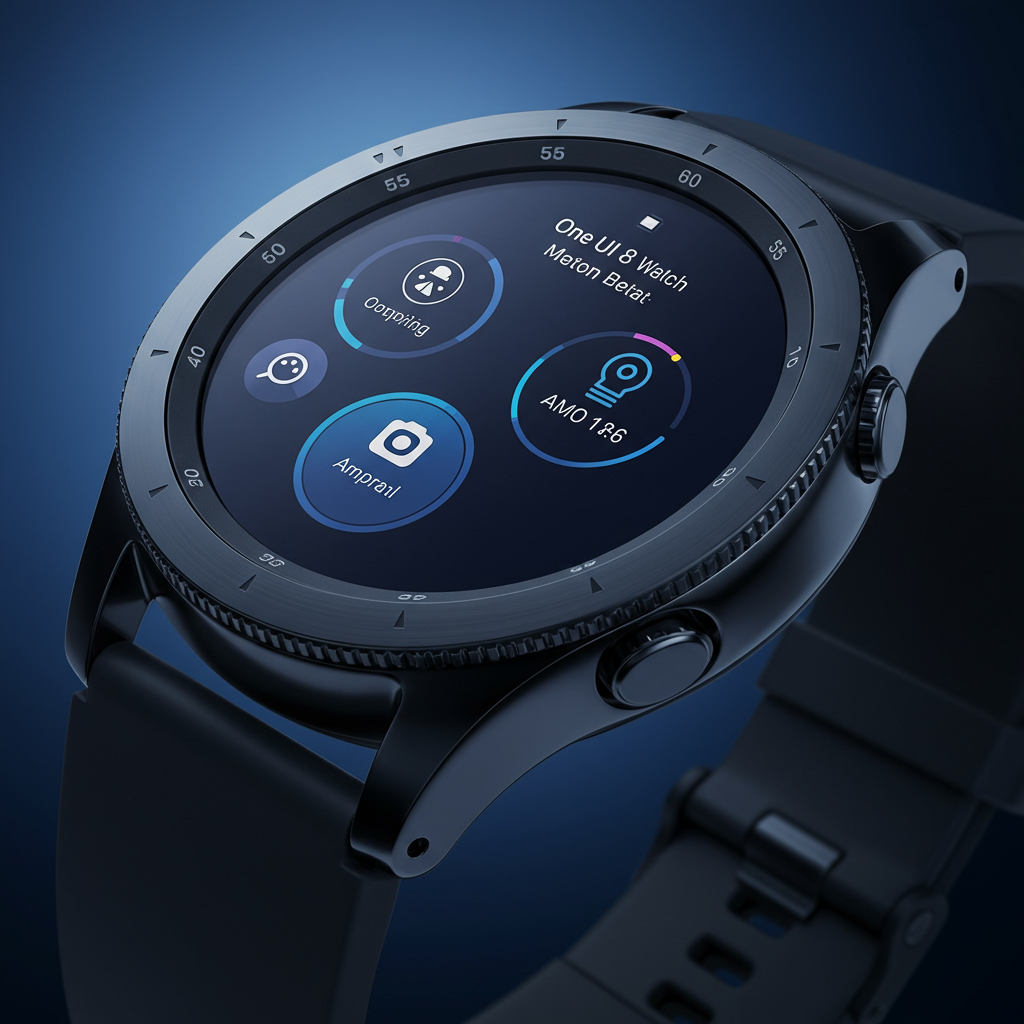OpenAI and Jony Ive’s highly anticipated AI device, poised to redefine personal computing, is reportedly encountering significant technical and conceptual hurdles. Industry sources indicate potential delays for the innovative screenless, ambient AI gadget, pushing back its eagerly awaited 2026 launch. The ambitious project grapples with fundamental challenges: defining its AI’s personality, ensuring robust user privacy, and securing immense computational power—issues resonating throughout the nascent AI hardware landscape. This collaboration, uniting OpenAI’s cutting-edge AI with Ive’s legendary design prowess, aims to transcend traditional smart speakers and wearables, but its path to market is proving complex.
The Vision: A Screenless AI Companion
At its core, the OpenAI Jony Ive AI device embodies a radical vision for human-computer interaction. It’s imagined as a palm-sized, screenless gadget, roughly the size of a smartphone, designed to be contextually aware of its surroundings. Equipped with cameras, microphones, and speakers, it would interpret both audio and visual cues from the physical environment. Its purpose? To act as an intuitive, ever-present personal assistant, responding seamlessly to user requests and offering proactive help without needing constant visual engagement or a specific wake word.
This device isn’t merely an upgrade; it’s a paradigm shift. OpenAI CEO Sam Altman and Jony Ive, through his design firm LoveFrom (and his startup ‘io’, acquired by OpenAI for a reported $6.5 billion in May), envision a “friend who’s a computer who isn’t your weird AI girlfriend.” Their goal is to create a digital companion that’s accessible yet not intrusive, a “Siri but better” experience that addresses the long-standing ambition of a truly helpful digital personal assistant. It aims to revolutionize the smart speaker market, pushing beyond basic functions like music playback to offer a significantly more powerful and useful machine.
Core Challenges Hampering Development
Despite the grand vision and the formidable talent involved, the OpenAI Jony Ive AI device faces critical problems across several fronts. These aren’t minor glitches but foundational dilemmas that require careful resolution before mass production can begin. The project is currently described as being in a “holding pattern” as these issues are addressed, potentially impacting its 2026 debut.
Defining the AI’s Personality and Voice
One of the most intricate challenges involves crafting the AI assistant’s “personality” and “voice.” The team is striving for a delicate balance: an AI that feels personable and helpful without becoming overly humanized or, conversely, too robotic. The desire is for an AI that intervenes only when useful, avoids awkward silences or excessively lengthy responses, and consistently provides an engaging, balanced demeanor. Achieving this nuanced goal of an “accessible but not intrusive” digital friend is proving more difficult than anticipated, highlighting the philosophical and psychological complexities inherent in AI design.
Navigating the Labyrinth of Privacy Concerns
The device’s “always-on” nature presents another significant hurdle: user privacy. Designed to continuously gather data through its sensors throughout the day, the device would build its virtual assistant’s “memory.” This continuous environmental awareness, while key to its seamless functionality, raises substantial privacy implications. OpenAI’s leadership is reportedly exercising caution, keen to avoid sparking new privacy controversies as they expand into physical hardware, especially given the current fragile state of consumer trust in AI technologies. The critical task is to responsibly handle sensitive user data, balancing ubiquitous helpfulness with the imperative of user privacy and data security.
The Immense Compute Power and Budgetary Realities
Perhaps the most concrete and formidable obstacle is the sheer demand for computational power. Running OpenAI’s advanced AI models locally, or with minimal cloud dependence, on a mass-produced consumer device requires substantial computing resources. Sources close to the project explicitly state that “Compute is another huge factor for the delay.” Unlike established players like Amazon and Google, who already possess vast computational infrastructure for devices like Alexa and Home, OpenAI reportedly struggles to secure enough compute even for its existing ChatGPT services. Scaling up this technology for consumer markets, while maintaining affordability and profitability, presents a significant financial and engineering challenge. High-performance hardware inevitably leads to increased production and operational costs, complicating efforts to price the device competitively.
Lessons from Past AI Hardware Ventures
OpenAI’s approach to this hardware venture appears notably cautious, a prudence likely informed by the recent commercial failures of similar ambitious AI hardware projects. The Humane AI Pin, for example, garnered considerable buzz but was ultimately discontinued after struggling to achieve satisfactory sales and receiving underwhelming reviews. Its screenless, AI-first approach, similar in spirit to OpenAI’s device, serves as a cautionary tale.
While the Humane AI Pin focused on adapting existing hardware concepts, OpenAI is uniquely positioned, having built the “hard part” first with its advanced AI capabilities, particularly the vocal prowess rolled out with GPT-4o. This offers an opportunity to create a new device purpose-built for this cutting-edge technology. However, the failures of predecessors underscore the inherent difficulty of building hardware, even for well-funded entities with top design talent. The market demands not just innovation, but also practicality, reliability, and a genuinely intuitive user experience.
Design Philosophy and User Interaction
While concrete details remain scarce, insights from Sam Altman suggest the device will be pocket-sized, environment-aware, and notably, without a traditional display. Users would primarily interact with it via a camera, microphone, and speaker, with the possibility of multiple cameras. Its versatility would allow it to be placed on a desk or table yet also easily carried. Jony Ive’s influence means the device will undoubtedly be aesthetically pleasing, with beauty intended to enhance user delight and engagement. The focus is on how the device works—likely centered on voice interaction augmented by a camera—rather than just its form factor. The lack of a screen could also mitigate potential battery life concerns, which surprisingly aren’t listed among the primary technical issues.
Connectivity remains another open question. Options range from Wi-Fi (problematic without a screen for setup) to tethering to a smartphone (raising control issues) or a built-in cellular connection (posing bandwidth cost questions). The easiest path, assuming users carry their phones, might be tethering, despite potential complications.
Frequently Asked Questions
What are the primary technical and conceptual hurdles delaying the OpenAI Jony Ive AI device?
The OpenAI Jony Ive AI device faces significant delays due to several key challenges. Foremost among these are defining the AI’s personality and voice, ensuring it acts as an “accessible but not intrusive” friend rather than a “weird AI girlfriend.” Additionally, substantial privacy concerns arise from the device’s “always-on” nature, which continuously gathers environmental data. Finally, securing and budgeting for the immense computational power required to run OpenAI’s advanced models on a mass-produced consumer device presents a major engineering and financial obstacle.
How does the proposed OpenAI Jony Ive AI device differ from existing smart speakers and AI wearables?
Unlike conventional smart speakers like Amazon Echo or Google Home, which are often limited to basic commands, the OpenAI Jony Ive AI device aims to be a much more powerful and useful machine. It’s envisioned as a screenless, palm-sized, contextually aware companion that interprets both audio and visual cues from its surroundings. It seeks to offer a “Siri but better” experience, providing proactive, seamless assistance rather than just reactive responses, thereby revolutionizing the personal digital assistant market with a focus on intuitive, ambient interaction.
What impact might these development challenges have on the OpenAI Jony Ive AI device’s anticipated 2026 release?
These significant technical and conceptual challenges could potentially push back the device’s anticipated 2026 launch date. The project is reportedly in a “holding pattern” as fundamental issues like AI personality, privacy protocols, and compute infrastructure are addressed. While OpenAI and Jony Ive are determined to refine both the technology and user experience, unresolved hurdles, particularly around compute power and user trust in ambient AI, could necessitate a longer development cycle to ensure the product delivers genuine value and avoids the fate of previous ambitious but commercially unsuccessful AI hardware ventures like the Humane AI Pin.
The Future of Ambient AI Hardware
The collaborative project between OpenAI and Jony Ive represents a pivotal moment in the evolution of AI hardware. It seeks to create a truly intelligent, seamless personal assistant that integrates deeply into daily life. While the reported delays underscore the complexity of merging cutting-edge AI with revolutionary hardware design, they also signal a commitment to quality and user experience over rushed releases. The eventual success of this device will depend on its ability to overcome these significant hurdles, delivering thoughtful design and advanced intelligence that truly transcends novelty and earns consumer trust. The outcome will undoubtedly shape the future trajectory of ambient AI, influencing how we interact with technology for decades to come.




